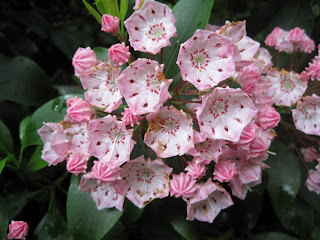I have a Korean friend who was very excited when she discovered that I had a Gingko tree. Apparently the plants are very highly regarded in Asia for their medicinal qualities, particularly when you use their leaves to make tea or a tincture. Well, being the curious person that I am I had to give the tea a go, didn't I? After finding a recipe I proceeded to inspect my poor little trees; there are two. Again the usual story at Kallista whereby the plants have to compete with one and other for the basics in life and so both of these lovely little trees are probably a bit stunted in growth and are growing in unusual postures to find some light. So I thought. However after a little research I discovered that 'erratic' branches are not uncommon and gulp, they can grow as big as 35 metres.

Anyway, I made the tea (only a half quantity as I didn't want to denude the trees). Conclusion: I think that it is not an unpleasant taste but perhaps it is one where you have to convince yourself that the Gingko is doing you some good. I also tried a commercial tea which was of a green tea base and had 15% Gingko leaf as well as fennel, licorice, peppermint, cinnamon bark, vanilla and caramel flavours. This was far more exciting, if not therapeutic.
Gingko tea recipe:
Add 1 cup of boiling water to 1 teaspoon of dried Gingko or 1 tablespoon (~5 leaves) of fresh Gingko. Sweeten as desired. (The tincture recipe had 500mls of vodka in it!)
But be warned. There are claims that Gingko will enhance your memory, ward off dementia and help your circulation however, there are also medical warnings regarding its anticoagulant and allergenic effects.

In Autumn the leaves of the Gingko tree turn bright yellow and are very pretty. So, when the time comes, I will include a picture of them along with the other spectacular deciduous trees. Now what was I saying? Yes, the Gingko biloba is great for your memory....
G.



















